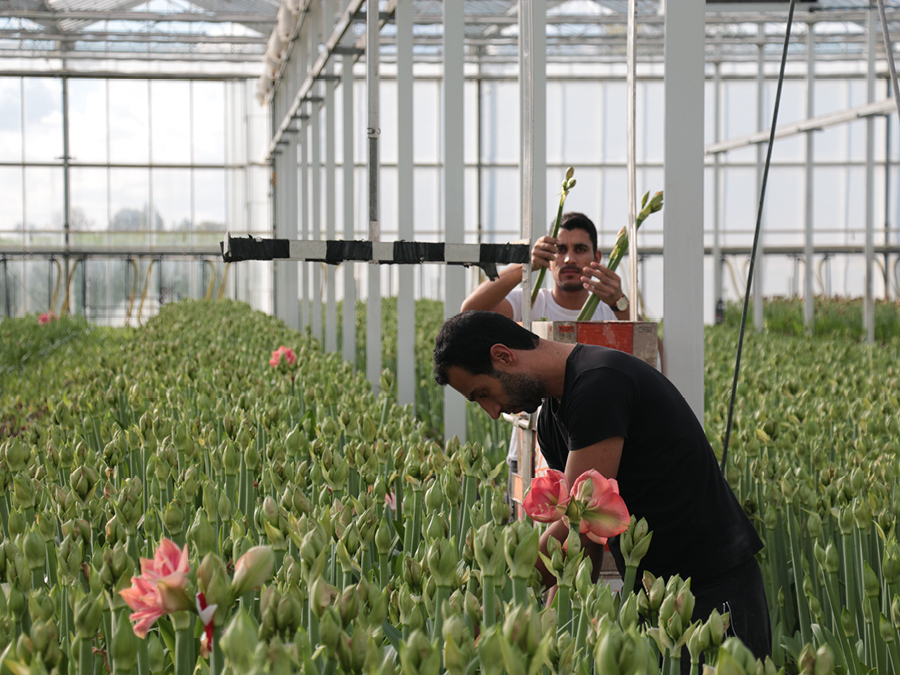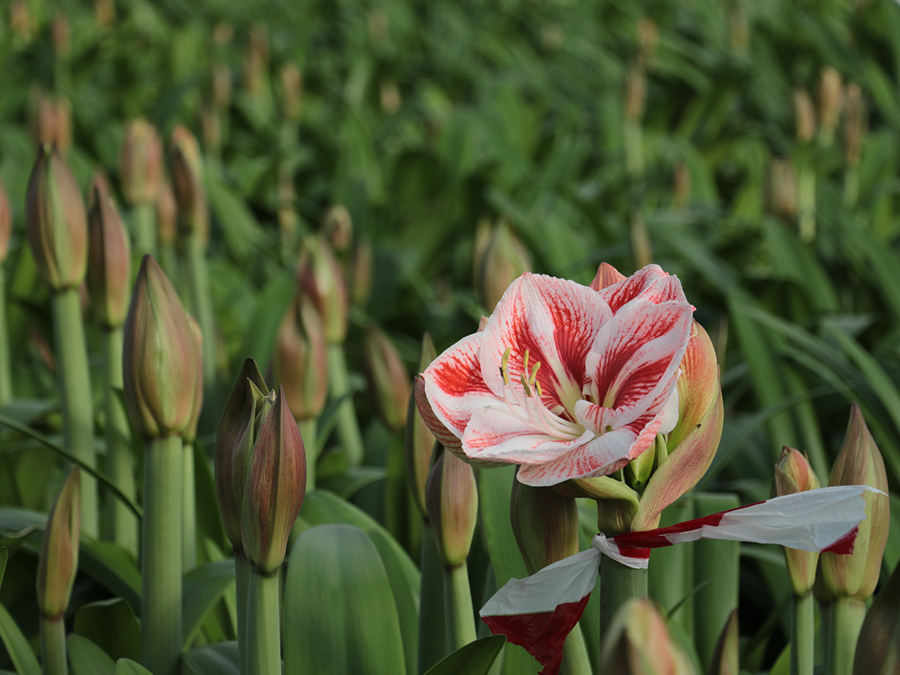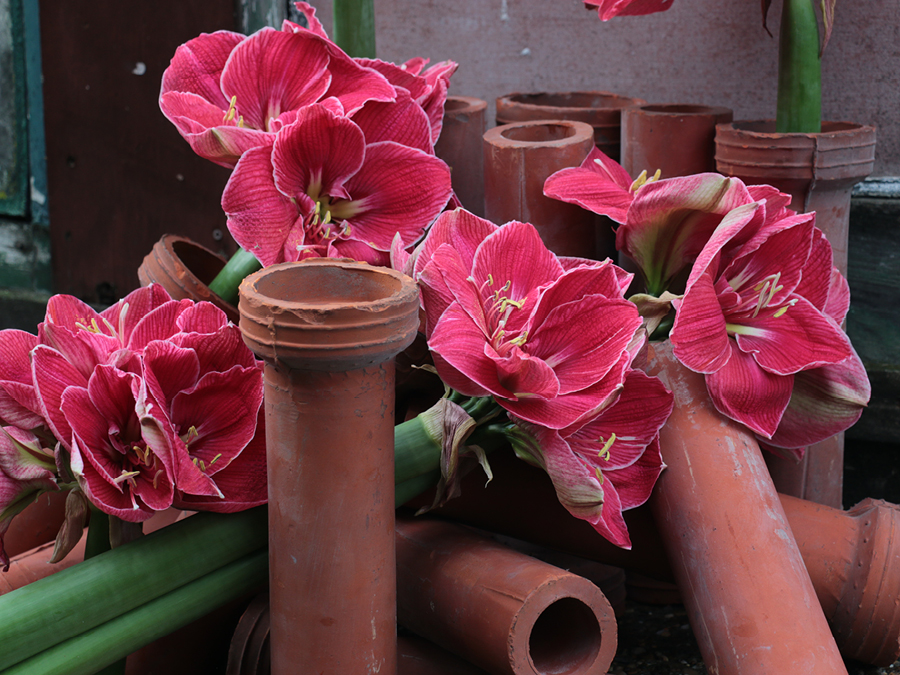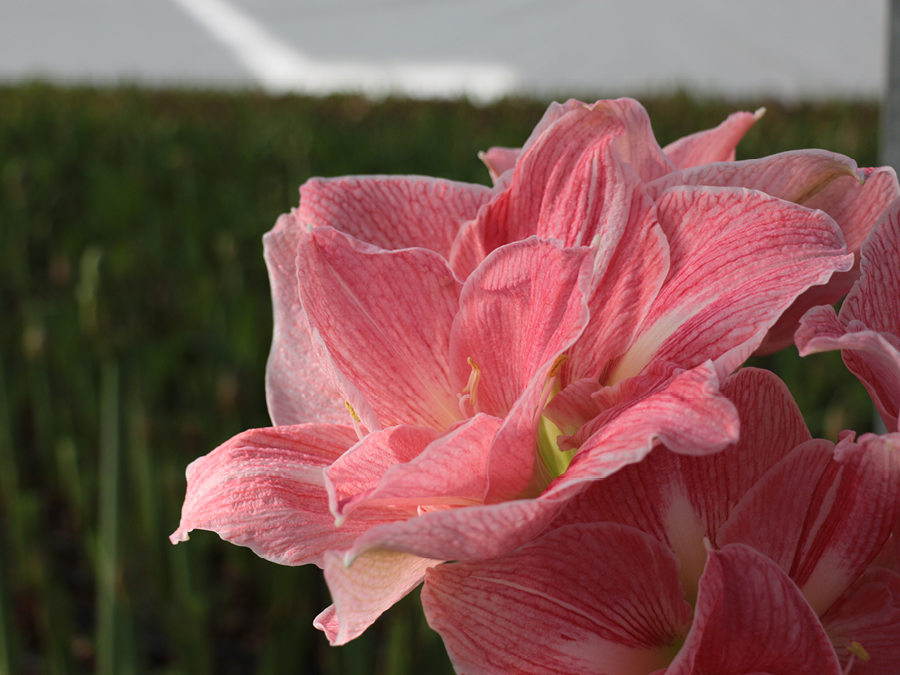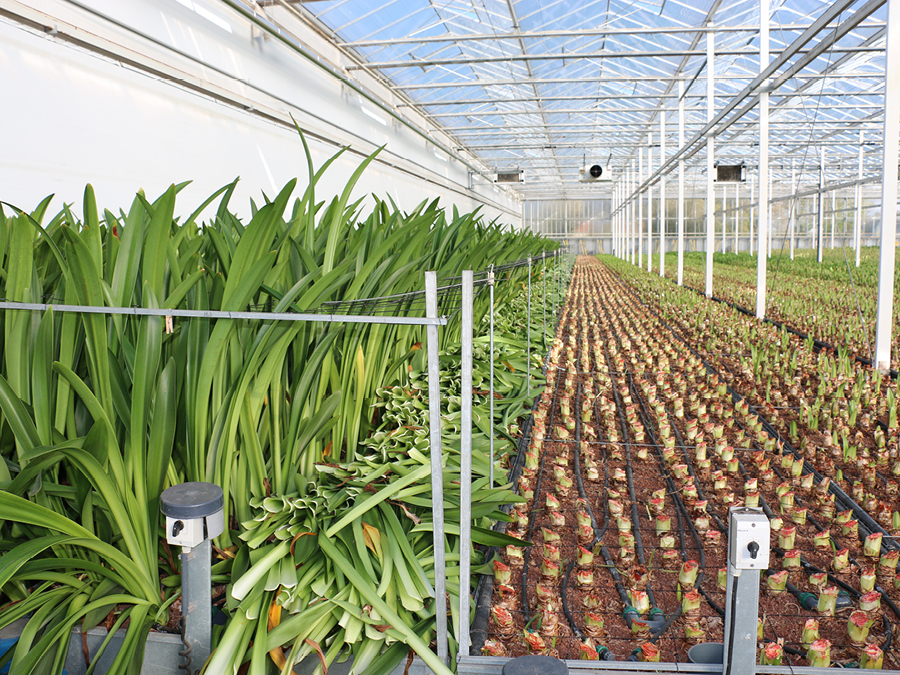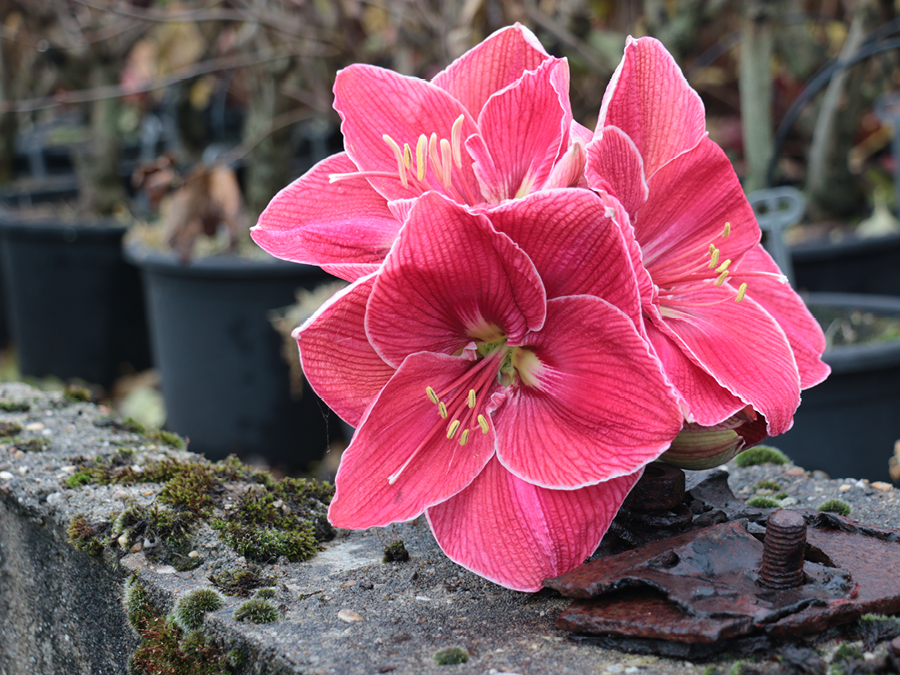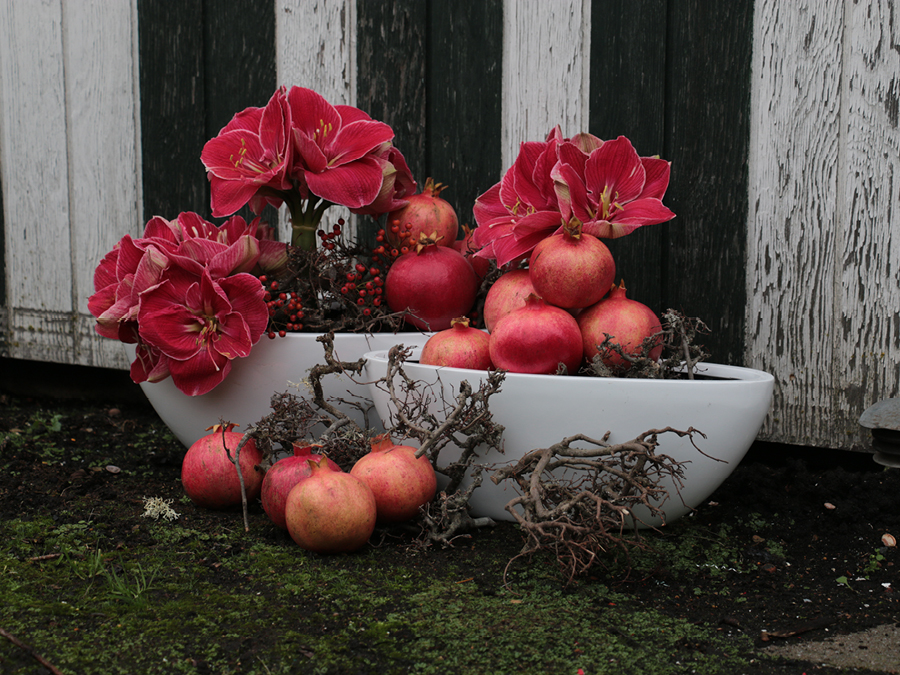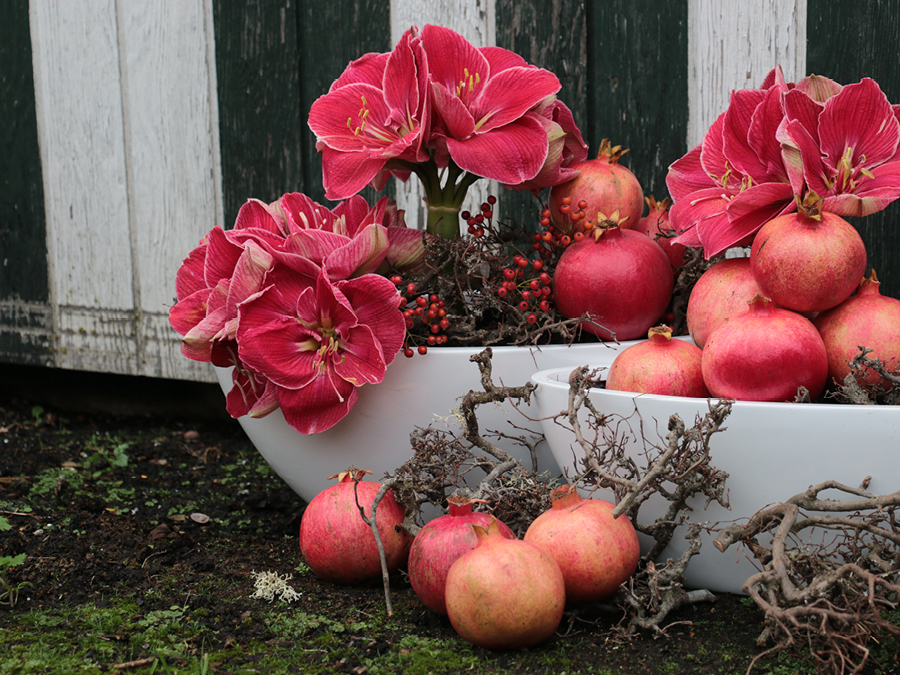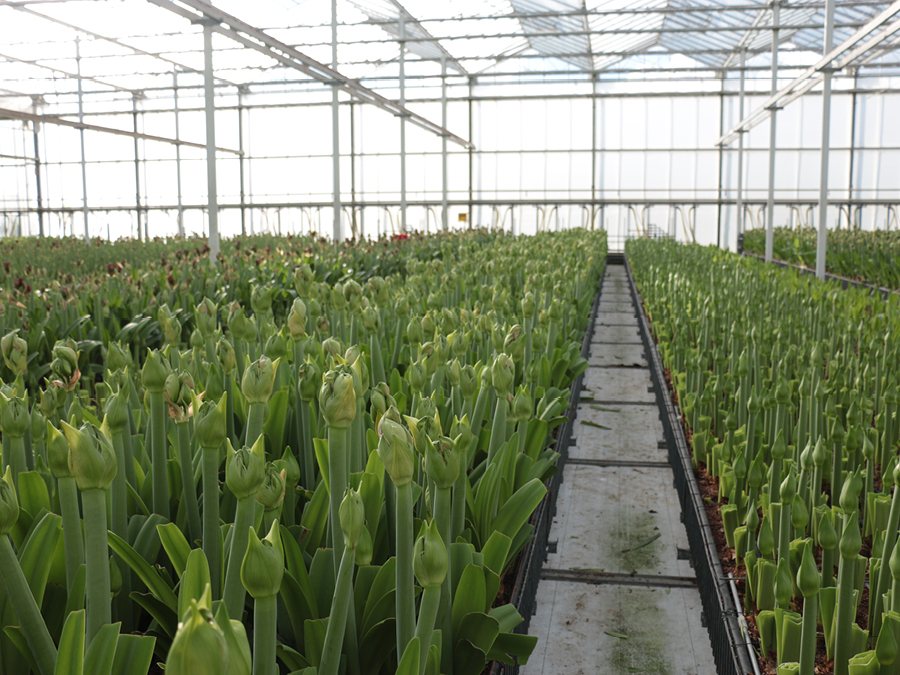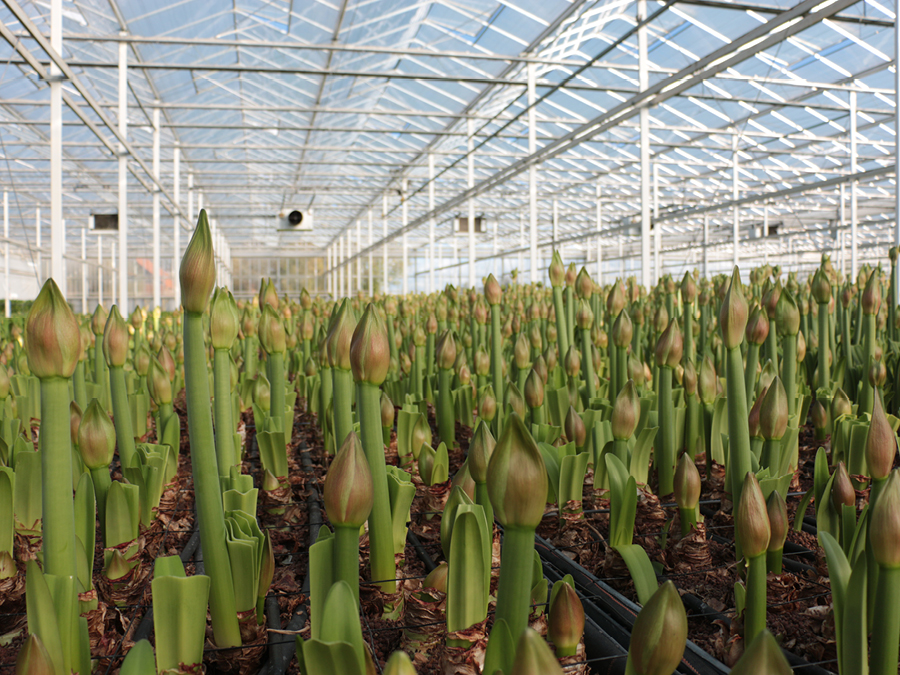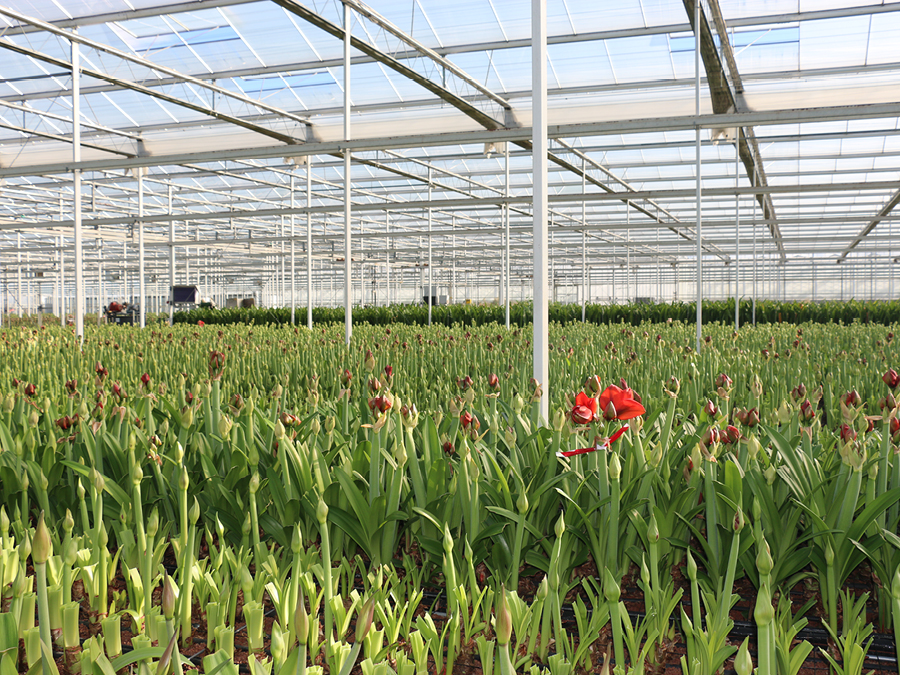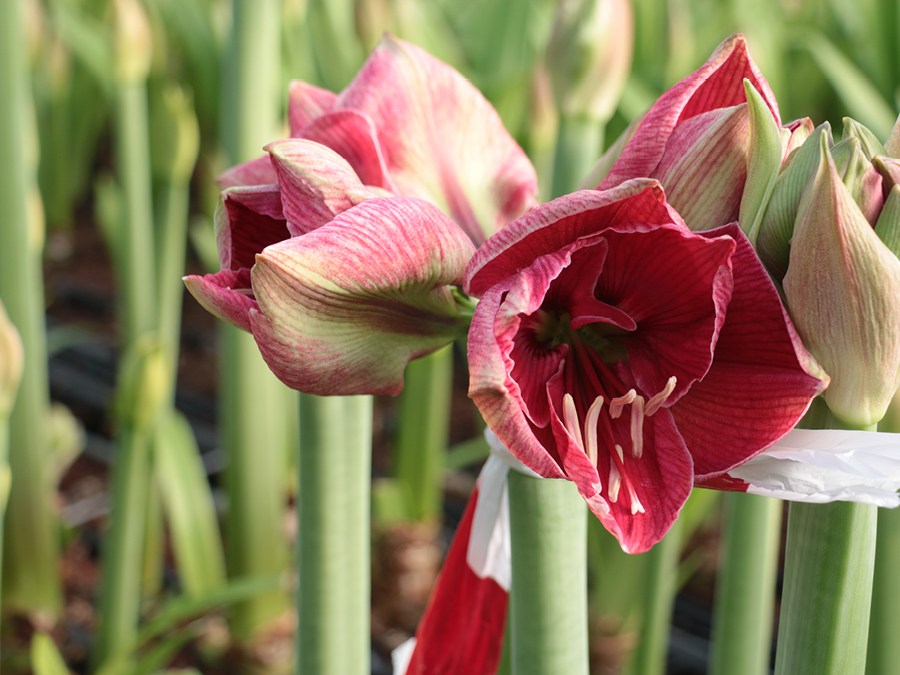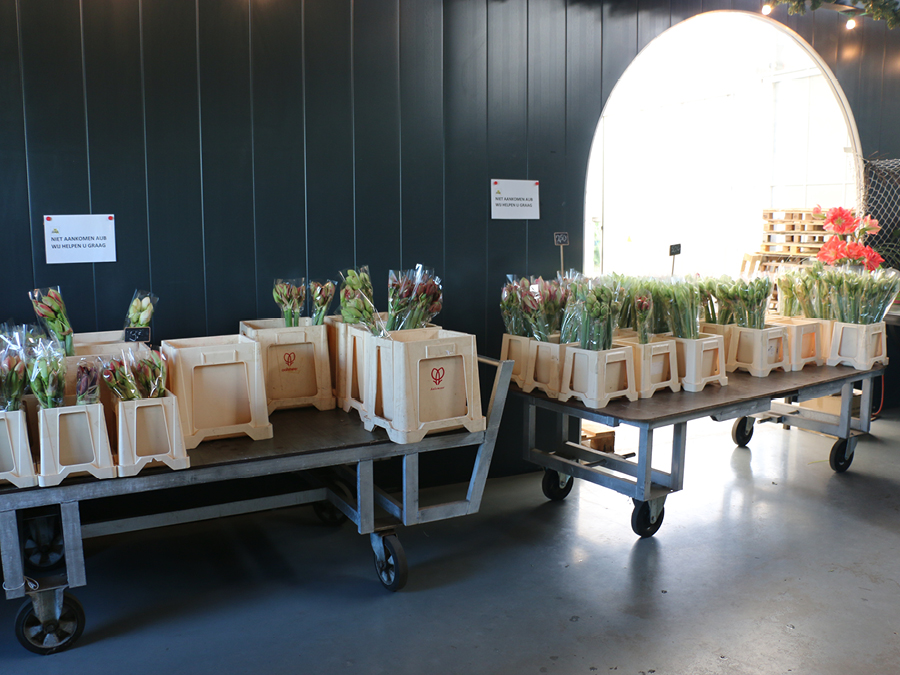This week at
Hippeastrum 'Lovely Nymph' & 'Magical Touch'
Calendar
The Hippeastrum 'Lovely Nymph' & 'Magical Touch' are available from October to January.
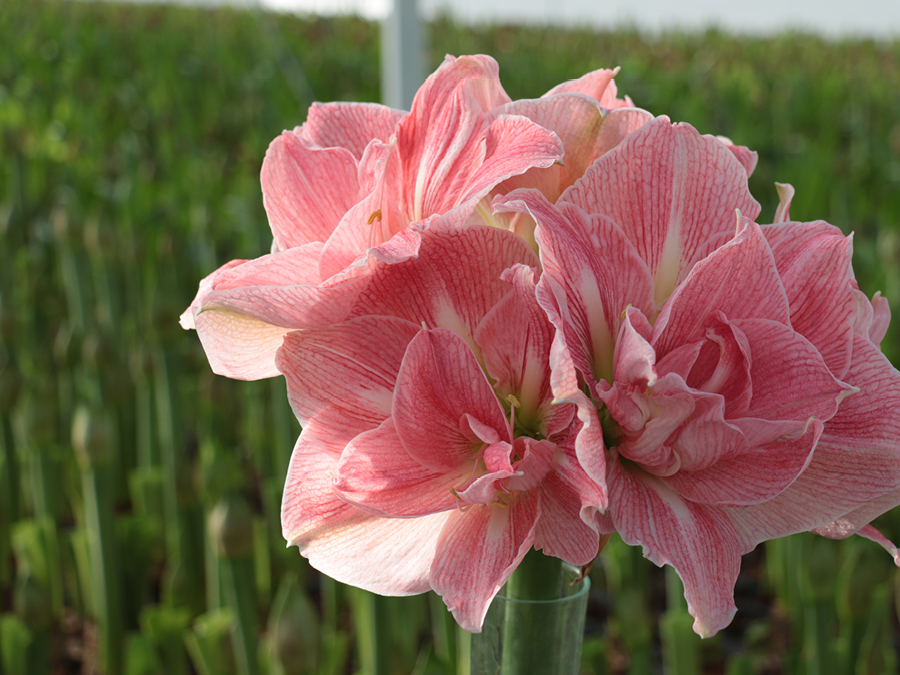
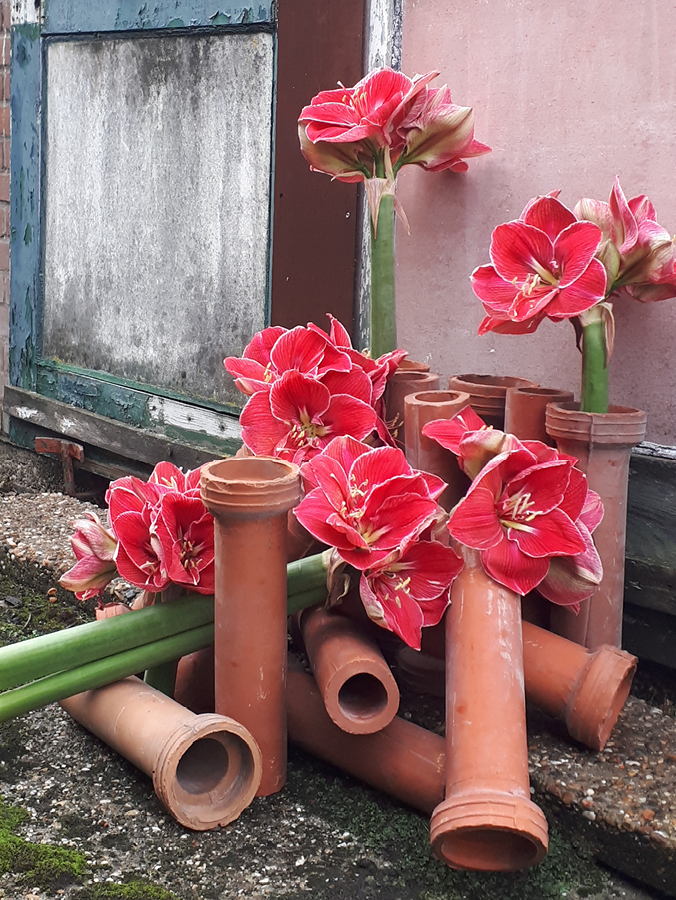
In the spotlights
The flower industry is slowly preparing for the upcoming Christmas. Purchases are being made and Christmas shows are being built. In this run-up to Christmas, the Hippeastrum appears more and more often. This bulbous plant from the daffodil family is better known as 'Amaryllis' although this name is officially not correct. The botanical name Amaryllis may actually only be used for a certain South African species. But the Amaryllis and Hippeastrum are very similar and the name Amaryllis is generally used for both crops. Maarten and Helen Sonneveld, from nursery Amazone, always use the name Amaryllis. They are known for their many exclusive and amazing species.
Wanted product
The Amaryllis (or actually the Hippeastrum) is a highly appreciated seasonal product. In the months around Christmas there is a substantial sales peak which declines after Christmas. But even those quiet moments have their charm. "It makes this work so diverse," says Maarten.
There are not a lot of Amaryllis growers in the neighborhood, so he gets a lot of visitors who want to buy this well-liked product. He decided this provided a new opportunity for his company. When they reconstructed about ten years ago, Maarten and Helen added a store to the company, which is opened on Fridays and Saturdays and where they sell the Amaryllis during the production season.
In the spotlights
Maarten and Helen breed about eighteen special varieties of Amaryllis for cut flower cultivation. They do not see themselves as mass-growers. They go for exclusivity; cultivating several special, exclusive types in a small-scale type cultivation. Of the eighteen varieties they grow, Maarten naturally also has his preference, which he would like to share with us.
Lovely Nymph
A very large heavy salmon-pink, double-flowered Amaryllis. Amazone has three beds of this beautiful variety. The Lovely Nymph is unique because of its extremely heavy quality. She has huge stems, big heads and lots of flowers. In addition, she has a high production rate and she is very easy to grow. A hugely valued product for the grower as well as for the consumer.
Magical Touch
Magical Touch is a fairly new species. This is her third year and this is the first year she will be available in larger numbers. Magical Touch is a single flower, but with a very special color. Not quite red, not quite purple, a color that is very difficult to describe. What makes her even more special is the white border on the outside of the petals. A flower with a Magical Touch indeed!
Both varieties are available until the end of December.
Cut flower food
Amaryllis do not need cut flower food. If the Amaryllis is placed together with other flowers that do need cut flower food, this does not hurt the Amaryllis and it can simply be added.

The cultivation
The Hippeastrum is originally from South America where this bulbous plant grows in the high mountains. After the cold winter the crop grows and it flowers in the spring. Maarten and Helen try to imitate as many of these weather conditions as possible in their greenhouse.
FloraPodium, 21 November 2018
Climate in the greenhouse
The Amaryllis bulbs are put on large beds with a tempex insulating layer containing clay granules as a cultivation substrate. The first flowers of the season will be cut in September. The peak lasts about five to six weeks, starting November 10 until Christmas.
After harvesting the flowers, the leaves start to grow. In the summer, the plants therefore have a lot of leaves, during which new buds are developed in the bulb for the next season. In order to bring the bulb into bloom, the leaves are removed and the bulb temperature brought down. This causes the ball to rest and the growth of the new buds is stopped, as is also the case in nature.
The temperature of the bulb is regulated by means of water hoses, which lie on the bottom of the beds. The temperature can be controlled per bed, so that Maarten himself can influence the production of his crop. In this rest period, water with a temperature of 6 degrees Celsius flows through the hoses so that the bulb temperature remains 13 degrees Celsius. After ten weeks of rest, the temperature of the bulb is raised, and harvesting can start about eight weeks later.
The bulbs are grubbed every three years after which the beds are cleaned and disinfected. In these three years the bulb has created new clusters, and after removing them they grow into new bulbs and are immediately used to replace old bulbs. Approximately one third of the greenhouse is harvested every year.
Sustainable system
Maarten and Helen have opted for a climate system where no gas is needed anymore. In this they are unique. The company is heated with a heat pump on electricity. With the heating, the cold is stored in the ground. That cold is then re-used cooling the bulbs when they go to rest, thus the heat is recovered again.
Amaryllis as a cut flower
Maarten's father started in the seventies, when his father (Maarten's grandfather) left the company. In those days they cultivated Freesias in the summer and Amaryllis in the winter. In the fifties and sixties the Amaryllis was brought into the house for the first time as a cut flower. At the time they were only available in red and white and the Amaryllis was associated with Christmas.
Now, 40 years later, Maarten and Helen grow 18 varieties in many different colors. This range has been greatly expanded in the last 10 years. Today, the Amaryllis is still a popular Christmas item. When asked why the Amaryllis is not grown all year round, the answer is actually quite simple "there is no demand, Amaryllis is mostly popular around the Christmas period."
The testbed
Maarten took us to their 'test bed' where they test varieties that have been selected after crossing. With this 'test bed' they can determine which varieties are suitable for further cultivation. It takes about 10 years for a new variety to go from crossing to actual production. The propagation of new species is a long process, mainly because a bulb gives only one flower and only then new clusters are created on the bulb. In addition, there are also a lot of dropouts during the breeding process. It takes a few years to fill a bed.
